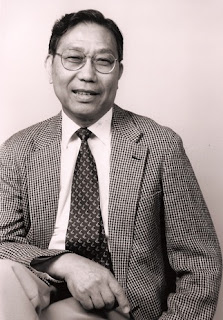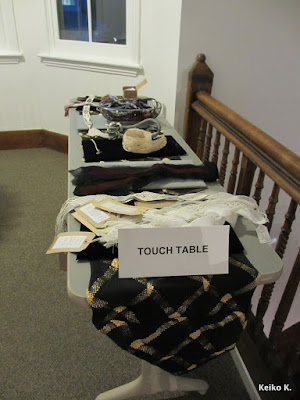 |
| Photo credit: DiscoverNikkei.org |
I grew up a dual national. I was born in Japan but my mother is an American citizen so she reported my birth abroad (see also: Wikipedia). The United States uses the jus sanguinis – meaning "right of blood" – principle to determine nationality so because my mother was a US citizen, she could apply to have my birth recognized by the US, thus giving me citizenship.
Having spent the majority of my life in the US, when it came time for me to choose a nationality, the obvious choice was to renounce my Japanese citizenship. I was attending college in the US, could no longer speak Japanese fluently and had no plans to ever return to Japan to live. I had also been living under the illusion that I had fully assimilated into American society.
The first time I came to regret my choice was during the 2000 election. Friends with European heritage looked into the possibility of applying for citizenship in their families' homelands and some actually went through with it. But as terrified as I was of living under a Bush presidency, my life was here and my Japanese fluency had only declined since I had renounced my citizenship. I figured that it was an impossible task. Then I thought about it again in 2004 and on and off since then. It's been on my mind ever since Donald Trump became the Republican nominee.
The US and Japan have enjoyed a surprisingly cozy relationship for the past 71 years given the brutal history of WWII. When I read about the Japanese American incarceration and the bombing of Hiroshima and Nagasaki I frankly do not understand how Japanese and Japanese Americans are able to embrace America. However, at this point it's difficult to imagine the US-Japan relationship deteriorating any time soon given that the two nations are dependent on one another. But who knows. I don't think that Japanese Americans in the 1940s thought that what happened to them could ever happen.
I used to feel secure in my status as a US citizen but as I have gotten older I have realized that for some Americans, you're only American as long as it's convenient for them. It doesn't matter that my mom's side of the family has been here for more than 100 years – for some people that's not long enough. I also have a Japanese father and the United States is not the land of my birth. The only reason I have US citizenship is due to a legal technicality. While I believe these people represent only a small fraction of Americans all it takes is for a few of the wrong people to be in power.
One of my friends who is Jewish (though not religious) sent me this text earlier today about something her seven-and-a-half-year-old half-Jewish daughter had said: "Did I tell you that [my daughter] said 'I don't want Donald Trump to be president. I don't want to do the Anne Frank thing.'" [She learned about the Holocaust and Anne Frank from BrainPOP]. I asked why her daughter was scared given that they aren't Muslim and my friend said: "She knows that she is Jewish, and she knows he wants to ban people of one religion. And she knows all about the Holocaust. She is afraid of being rounded up. I cried when I assured her that wouldn't happen no matter who wins." Parents in democratic countries should not have to have these conversations with their children.
I never thought that in my lifetime I would see a return to the sort of racist injustice and fearmongering that led to 120,000 Japanese and Japanese Americans being locked up by the US government for the crime of being Japanese, yet here we are. Earlier this year American-Japanese artist Setsuko Winchester wrote about a conversation she had with a park ranger at Tule Lake in which he told her that they had seen an increase in the number of visitors last year. "The problem he said was that they weren’t coming to uncover this dark part of US history. Rather, they were coming because “they wanted to know how internment worked” — and they were doing so “because they heard Trump and some mayor say it was an example the government might re-think to solve the Muslim-American problem." This story has haunted me ever since.
With that in mind, I decided it was time to stop wondering and find out what else besides intensive language lessons I would need to reacquire my Japanese citizenship. I called the Consulate-General of Japan in Boston and the staffer I spoke with kindly emailed me some links after our call.
The first step in reacquiring Japanese citizenship seems to be to live in Japan for a minimum of three years (the residency requirement for foreign nationals who do not have a Japanese parent is ten years) as laid out in Article 6 (ii) of the Nationality Act. In order to do that I was told that the relevant visa is the one for "Spouse/child of Japanese national". Although it does seem that in the case of a former Japanese national the Minister of Justice can permit naturalization if you have a domicile in Japan per Article 8 (iii) so I'm not entirely sure if I bought property in Japan if I could bypass the three year residency requirement.
第六条 次の各号の一に該当する外国人で現に日本に住所を有するものについては、法務大臣は、その者が前条第一項第一号に掲げる条件を備えないときでも、帰化を許可することができる。
Article 6 The Minister of Justice may permit naturalization for a foreign national currently having a domicile in Japan who falls under one of the following items even if that person has not met the conditions listed in the preceding Article, paragraph (1), item (i):
二 日本で生まれた者で引き続き三年以上日本に住所若しくは居所を有し、又はその父若しくは母(養父母を除く。)が日本で生まれたもの
(ii) A person born in Japan, and continuously having a domicile or residence in Japan for three years or more or whose father or mother (excluding an adoptive parent) was born in Japan;
It seems that the biggest hurdle to reacquiring my Japanese citizenship would be my lack of fluency. At my age and given how complex Japanese is, it feels like it would be nearly impossible but there's that old aphorism: "desperate times call for desperate measures." Renouncing my US citizenship might ultimately be the most difficult part since the bulk of my family is in the US.
Japan has its own problems and their fate is closely tied to the US's but sometimes I feel like if I'm going to live in a country where I'll never be fully accepted would I rather live here or in Japan? It's not an easy question to answer. This election cycle it has felt like the US is regressing, not moving forward. Some would argue that Japan is having similar problems with rising Japanese nationalism and attempts to return to more traditional values but when I hear news about changing attitudes towards Okinawans and gaikokujin and see the incredible aerial footage of mass anti-nuclear, anti-security bill (article), and anti-US military protests it feels like Japan is poised to make some real progress. It could be a grass is greener on the other side of the Atlantic fantasy but at least now I know what my options are.
Disclaimer: Any errors in this piece are due to my own misunderstanding. If you are thinking about returning to Japan and reacquiring your Japanese citizenship please contact your local embassy, consulate, or permanent mission for more information.
Related Articles
- TIME: Exclusive: Donald Trump Says He Might Have Supported Japanese Internment
- The Roanoke Times: David Bowers statement on Syrian refugees
- The Washington Post: Roanoke Mayor David Bowers: Reject refugees like U.S. interned Japanese
Related Posts
*****
This post has been crossposted at Discover Nikkei, a multi-lingual Nikkei online community.
From their website: "Discover Nikkei is a community website about Nikkei identity, history and experiences. The goal of this project is to provide an inviting space for the community to share, explore, and connect with each other through diverse Nikkei experiences, culture, and history." Discover Nikkei is coordinated by the Japanese American National Museum and supported by The Nippon Foundation.





















